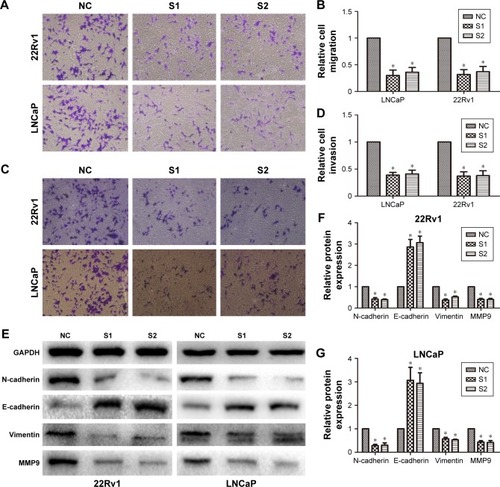Figures & data
Figure 1 Relative LINC01296 expression in prostate cancer.
Abbreviation: lncRNA, long noncoding RNA.
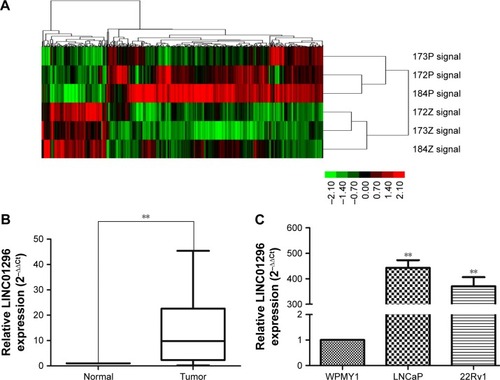
Table 1 The association between LINC01296 expression and clinicopathological features of prostate cancer
Figure 2 Kaplan–Meier survival curves of two groups of patients with prostate cancer based on LINC01296-expression levels (P=0.01).
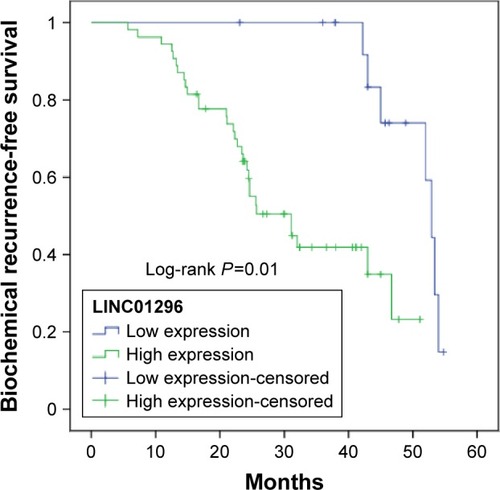
Table 2 Cox proportional-hazard model of biochemical recurrence-free survival in prostate cancer
Figure 3 siRNA-mediated knockdown of LINC01296 inhibited prostate cancer-cell proliferation.
Abbreviations: siRNA, short interfering RNA; NC, negative control; OD, optical density; GAPDH, glyceraldehyde 3-phosphate dehydrogenase; SI, short interfering RNA1; S2, short interfering RNA2.
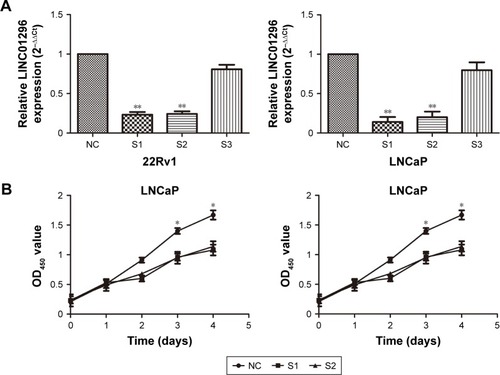
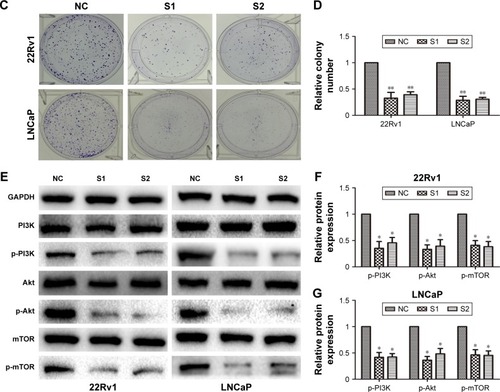
Figure 4 siRNA-mediated knockdown of LINC01296 inhibited prostate cancer-cell migration and invasion.
Abbreviations: siRNA, short interfering RNA; NC, negative control; GAPDH, glyceraldehyde 3-phosphate dehydrogenase; SI, short interfering RNA1; S2, short interfering RNA2.
